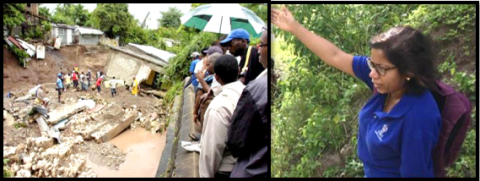

Scientists and engineers fear the worst for this above-average hurricane season. And so, too, should Jamaicans, they warned – especially thousands living in the path of the Hope and Yallahs (St Thomas) rivers, the Rio Cobre (St Catherine), Rio Minho (Clarendon), and around the North and South gullies in Montego Bay, St James, just some of the areas prone to flooding and landslides. “The damage happens because people are living where they are not supposed to be living,” charged Dr Arpita Mandal, hydrologist and postgraduate coordinator in the Department of Geography and Geology at The University of the West Indies. Not all squatters For years, Mandal has researched the Hope River and the Kintyre community. “The rainfall we have in Jamaica during these hurricane months is intense. You can have 200-214 millimetres in one day and the river channels are not able to accommodate that amount of water,” said Mandal, noting the steepness of the Hope River and the tonnes of loose silt and debris it carries. “If you look at that Kintyre area, a lot of houses are literally on the riverbed. When the river comes down with high force and a lot of material, it needs space to move, and when it doesn’t get space, it floods out,” she explained. “Some of the rivers are regularly monitored – like the Rio Cobre, which has a floodgate near the Bog Walk gorge, [but] people still continue to live on the steep riverbanks. “The Government has been doing a lot of things under climate change projects to construct dams and so on, but these houses should not be there,” she argued, noting that relocation would be a political nightmare. [extract from Jamaica Gleaner article “Dead in the Water”]
Read more:
Published on 18 Jun, 2021